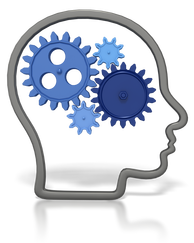 Over the past decade, research into unconscious bias has impacted our understanding of workplace equity, diversity and inclusion programs. This research has helped us understand the extent to which unconscious biases permeate society and contribute to the challenges organizations face in achieving workplace equity, diversity and inclusion. Unconscious biases also impact the design and delivery of appropriate services to a diverse population that supports equitable outcomes for all service users. The research shows that in order to create more inclusive organizations, while it is important to change structures (e.g., policies, practices), it is also important for employees to reflect on their own biases and how they impact interactions with colleagues and clients. What is unconscious bias?The Kirwan Institute defines unconscious bias (also referred to as implicit bias) as: The attitudes or stereotypes that affect our understanding, actions, and decisions in an unconscious manner. By definition we are not aware of our unconscious biases. But they are evident in our actions, interactions, and decisions. We know that with optical illusions, our eyes trick our brains. But research shows that our brains also trick our senses in a number of ways. For example, wine tastes better when we think it is expensive and food that looks good tastes better. We also know that holding blind auditions helped symphony orchestras overcome the biases about whether men played better than women. Our brains also trick our eyes, resulting in cognitive illusions. This means that we see what we believe. As the TV show What Would You Do? demonstrates, stereotypes about Black criminality cause us to react very differently to Blacks than Whites when they are engaged in the same activity. Research into unconscious bias has caused those in the equity, diversity, and inclusion field to broaden their focus to include unconscious bias and its impact on maintaining inequality. Initially, diversity programs focused solely on developing equitable policies and practices and addressing conscious, deliberate discrimination. This was based on the assumption that inequality within organizations reflect barriers embedded in policies and practices or the conscious decisions of individuals. We now have a better understanding that biases in organizations operate at three levels and interact with, and reinforce, each other:
 Research in various fields, including psychology and neuroscience, looks at how the brain processes information. Researchers have found that our mind is like an iceberg, with our conscious minds being just the tip and the unconscious being much more vast and powerful. What hundreds of research studies have found is that much more of our decisions come from the automatic processing of our unconscious minds. Instead of making rational, informed decisions based on an assessment of the factual information available, we tend to make emotional decisions based on our unconscious minds and use our conscious minds to generate the facts to justify those decisions.
All people born into a biased (e.g., racist, sexist, homophobic, etc.) society and are socialized by biased institutions, family members, and peers incorporate these biased perspectives into their thinking. This means that all of us have biases. These biases are then reflected in how we interact with others, the judgements we make about them, the organizational cultures we create, and the policies and programs developed. Reflecting on Our Biases While the research shows that we all have biases, it also shows that we are not at the mercy of these biases and can minimize their impact on our actions. There are a number of strategies that can be put in place to address our biases and create more inclusive working environments. Be aware of your own biases: Our biases become an issue when it undermines our ability to interact effectively with others or assess them fairly. One way of unearthing our biases is through Harvard University's online assessment tool called the Implicit Association Test. To learn more, see also: What does my headscarf mean to you? Explore your feelings: Discomfort is diagnostic. Use your emotional reactions to others (both positive and negative) to identify possible biases. To learn more, see: How to overcome your biases? Walk boldly toward them. Break out of your comfort zone and interact more with people who are different from you: If we chose to interact more with people who are different from ourselves, we can begin to change our perceptions of others and reduce our discomfort. Knowing more people from certain communities, backgrounds and identities, both as colleagues and friends, helps us see them as individuals rather than stereotypes. To learn more, see: The danger of a single story In my next post, I'll examine how unconscious biases impact the workplace.
0 Comments
Your comment will be posted after it is approved.
Leave a Reply. |
TANA TURNERTana Turner is Principal of Turner Consulting Group Inc. She has over 30+ years of experience in the area of equity, diversity and inclusion. Categories
All
|
